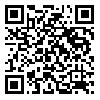The aim of this study was to examine how timing of supplemental lighting and different light combinations affect the vegetative and reproductive responses of petunia (Petunia × hybrida Super cascade Blue). This experiment was designed as a factorial based on a randomized complete blocks design with three replications. After being in the greenhouse for 12 hours, the plants received supplemental lighting at two different times (from 6 p.m. to 10 p.m. and 10 p.m. to 2 a.m.) by the usage of various combinations of red light (R, 625 nm) and blue light (B, 467 nm) including 100% R, 15% B : 85% R, 30% B : 70% R and high pressure sodium lamp (HPS, serving as control). Results showed that there was not significant interaction between light combination and the timing of supplemental lighting on vegetative characteristics. Plants under 30% B : 70% R light ratio had the highest foliage fresh weight (15.73 g) and dry weight (0.86 g), root fresh weight (1.13 g) and dry weight (0.3 g), average height of lateral shoots (6.63 cm), Chlorophyll a, b, total and carotenoids contents (1.03, 0.35, 1.38 and 0.44 mg/g FW, respectively) and the plants under 15% B : 85% R light ratio had the highest height of central stem (14.4 cm), leaf area (313.07 cm2), number of leaves (80.5) and number of lateral shoots (9.83). Also, results revealed that there was significant interaction between timing of supplemental lighting and light combination on the flowering time, and the shortest time to flowering (56 days after sowing) was obtained under 30% B : 70% R light ratio from 10 p.m. to 2 a.m
Received: 2017/10/7 | Accepted: 2018/11/15 | Published: 2019/05/15
| Rights and permissions | |
 |
This work is licensed under a Creative Commons Attribution-NonCommercial 4.0 International License. |







